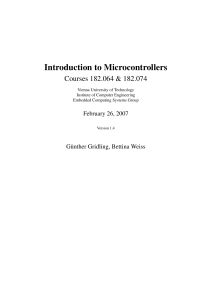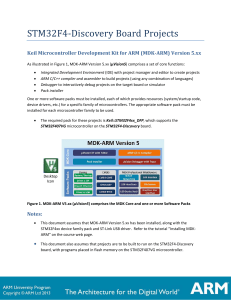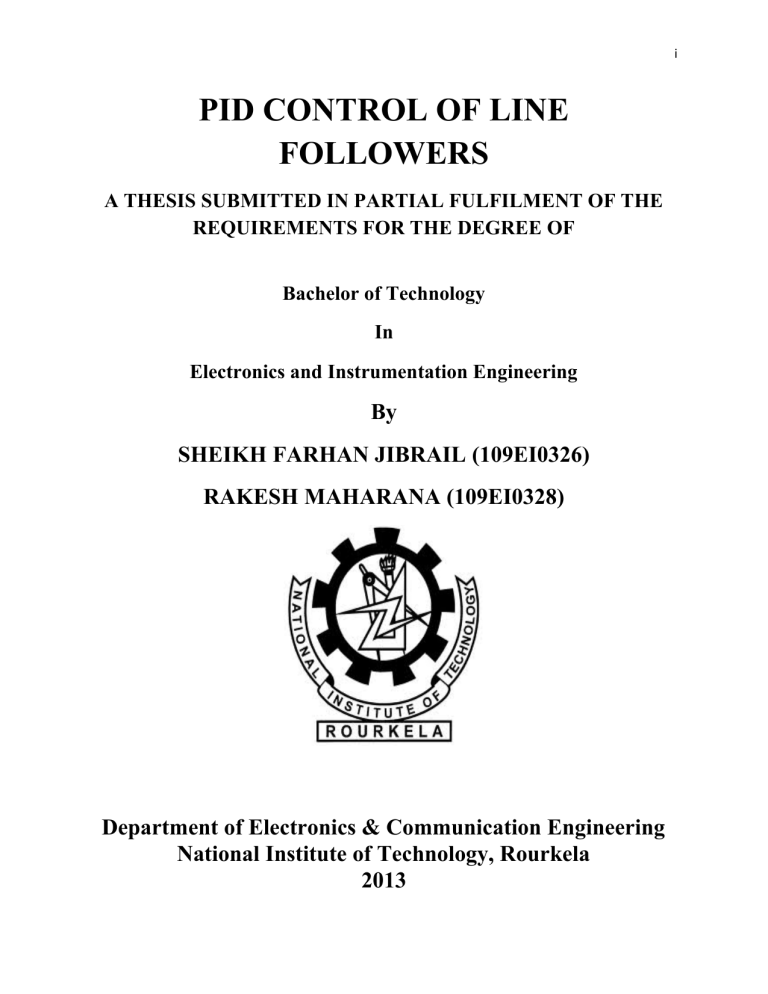
i
PID CONTROL OF LINE
FOLLOWERS
A THESIS SUBMITTED IN PARTIAL FULFILMENT OF THE
REQUIREMENTS FOR THE DEGREE OF
Bachelor of Technology
In
Electronics and Instrumentation Engineering
By
SHEIKH FARHAN JIBRAIL (109EI0326)
RAKESH MAHARANA (109EI0328)
Department of Electronics & Communication Engineering
National Institute of Technology, Rourkela
2013
ii
PID CONTROL OF LINE
FOLLOWERS
A THESIS SUBMITTED IN PARTIAL FULFILMENT OF THE
REQUIREMENTS FOR THE DEGREE OF
Bachelor of Technology
In
Electronics and Instrumentation Engineering
By
SHEIKH FARHAN JIBRAIL (109EI0326)
RAKESH MAHARANA (109EI0328)
Under the guidance
of
Prof .Tarun Kumar Dan
Department of Electronics & Communication Engineering
National Institute of Technology, Rourkela
2013
iii
CERTIFICATE
This is to certify that the work in the thesis entitled “PID CONTROL OF LINE FOLLOWERS”,
submitted by Sheikh Farhan Jibrail (109EI0326) and Rakesh Maharana (109EI0328) has been
carried out by them under my supervision for the award of Bachelor of Technology Degree in
“ELECTRONICS & INSTRUMENTATION” Engineering during the session of 2009-2013 in
the Department of Electronics & Communication Engineering at National Institute of
Technology, Rourkela.
Place: Rourkela
Date:
Prof. TARUN KUMAR DAN
Department of Electronics and Communication
Engineering
National Institute of Technology, Rourkela-769008
iv
ACKNOWLEDGEMENT
We would like to take this opportunity to express our gratitude to our respected supervisor Prof
Tarun Kumar Dan for the inspired guidance, insight, continuous encouragement, timely
suggestions that he has provided throughout the duration of this work. The present work, being
successfully completed due to his sincere monitoring and vital inputs.
We are grateful to Prof. S Meher, Head of the Department of Electronics and Communication
Engineering, permitted us to make use of the available facilities in the department to carry out
the project successfully. We would also thank all our friends, faculty and staff members of
Department of Electronics & Communication Engineering for their support and all kinds of help
to accomplish this work.
Sheikh Farhan Jibrail
(109EI0326)
Rakesh Maharana
(109EI0328)
v
ABSTRACT
Line Following is one of the most important aspects of robotics. A Line Follower Robot is an
autonomous robot which is able to follow either a black or white line that is drawn on the surface
consisting of a contrasting color. It is designed to move automatically and follow the made plot
line. PID control of line follower is a method consisting of Proportional, Integral & Derivative
functions to improve the movement of the robot. The robot uses several sensors to identify the
line thus assisting the bot to stay on the track. The robot is driven by DC Motors to control the
movement of the wheels. The Atmega Microcontroller will be used to perform and implement
PID algorithms to control the speed of the motors steering the robot to travel along the line
smoothly. This project aims to implement the PID algorithm and control the movement of the
robot by proper tuning of the control parameters and thus achieve better performance. This
project has various applications in the field of Medicine, Automation and Space Application.
vi
TABLE OF CONTENTS
CHAPTER ELEMENTS PAGE
PAGE NO
CERTIFICATE
iii
ACKNOWLEDGEMENT
iv
ABSTRACT
v
TABLE OF CONTENTS
vi
LIST OF FIGURES
viii
LIST OF TABLES
ix
CHAPTER 1 INTRODUCTION
1.1 Introduction to robotics
2
1.1.1 What is a robot?
2
1.1.2 Autonomous Robot
2
1.1.3 Applications of a Robot
3
1.1.4 Overview
4
1.2 Objectives
4
1.3 Scope of Project
5
1.4 Problems Statement
5
1.5 Thesis Organization
6
CHAPTER 2 HARDWARE DEVELOPMENT
2.1 Introduction
8
2.2 Basic Operation
8
2.3 Input System
9
2.3.1 Sensors
9
2.3.1.1 Proximity Sensor
10
2.3.1.2 Infrared Sensor
10
2.3.1.3 Arrangement of Sensors
14
vii
2.3.2 Comparator
15
2.3.3 Voltage Regulator 78XX
16
2.3.4 Processing System
17
2.3.4.1. Microcontroller
18
2.3.4.2 Why Use Microcontroller?
18
2.3.4.3 Why ATMEGA 32L?
20
2.3.5. Analog to Digital Converter
2.4 Output System
23
25
2.4.1 Motor Driver
25
2.4.2 Electric Motor
27
2.4.2.1 DC Motor
28
2.4.2.2 Use of gears
28
2.4.2.3 Why two motors?
29
2.5 CONTROLLERS
31
2.5.1 Proportional controller
34
2.5.2 Integral controller
35
2.5.3 Proportional Derivative
36
2.5.4 Proportional Integral Derivative Controller(PID)
37
CHAPTER 3 SOFTWARE DEVELOPMENT
3.1 Programming and Simulation
41
3.2 Program
41
CHAPTER 4 CONCLUSION AND RECOMMENDATION
4.1 Conclusion
47
4.2 Future Recommendation
47
REFERENCES
48
viii
LIST OF FIGURES
FIGURE DETAILS
PAGE NO
2.1 BASIC BLOCK DIAGRAM OF LINE FOLLOWER
7
2.2 SENSOR CIRCUIT DIAGRAM
8
2.3 ARRAY OF SENSORS
8
2.4 SCHEMATIC DIAGRAM OF IR SENSORS
10
2.5 TRANSMISSION METHODS OF IR SENSORS
11
2.6 DIFFERENT ANGLES WITH DIFFERENT DISTANCES
12
2.7 TOP VIEW OF POSITION OF SENSORS
13
2.8 CIRCUIT DIAGRAM OF COMPARATOR IC
14
2.9 CIRCUIT DIAGRAM FOR IR SENSORS USING COMPARATOR
15
2.10 CIRCUIT DIAGRAM FOR VOLTAGE REGULATOR
16
2.11 MICROCONTROLLER BASED SYSTEM
17
2.12 PIN CONFIGURATION OF ATMEGA 32L
20
2.13 ANALOG TO DIGITAL CONVERTER SCHEMATIC
23
2.14 PIN DETAILS OF L293D
25
2.15 DESCRIPTIONS OF VARIOUS PARTS
28
2.16 DIFFERENT TYPES OF MOVEMENT OF ROBOT
29
2.17 GENERAL CONTROLLER STRUCTURE
30
2.18 GENERAL STRUCTURE OF PID CONTROLLER
31
2.19 VARIATION OF PROPORTIONAL CONTROLLER WITH VARIATION
OF Kp
34
2.20 VARIATION OF INTEGRAL WITH KI
35
2.21 HEAT EXCHANGER CONTROL
37
ix
LIST OF TABLES
TABLE DESCRIPTION
PAGE NO
TABLE 2.1 MOTOR MOVEMENTS WITH POWER SUPPLY
26
TABLE 2.2 OUTPUT FOR VARIATION IN INPUT
26
TABLE 2.3 MOVEMENT OF ROBOT WITH VARIATION IN MOTOR DIRECTION
29
1
CHAPTER 1
INTRODUCTION
2
1.1 Introduction to Robotics:
1.1.1 What is a robot?
A Robot has been defined by the Robot Institute of America as:
“A robot is a reprogrammable, multifunction, manipulator designed for moving materials, tools,
parts etc. through various programmed motions to perform a variety of tasks “.
A Robot has been defined by Webster dictionary as:
“A robot is an automatic device that performs functions normally ascribed to humans or a
machine in the form of a human.”
Generally robots have three main parts which include processor, sensor and motor control
system. Robot sensors represent eyes while actuators act as legs and controller acts as the brain
of a human.
1.1.2 Autonomous Robot
Autonomous robots are the robots that can perform desired tasks in any environment without
continuous human guidance. In fields like space exploration high degree of autonomy is required
where communication and delays are unavoidable.
In the real world a fully autonomous robot has the ability to gain information about the
environments and to work for months without human intervention. It can travel from one
location to the other without navigation assistance. It can avoid situations that are harmful to any
property or itself and can repair without external assistance.
3
1.1.3 Applications of a Robot:
Robot can replace human’s job because robots can perform faster than humans. Robots need not
to drink, to be paid or rest as compared to humans. They can do repetitive work with high
accuracy and will not stop or slow until the task is finished while humans get bored.
Robot can be applied in military to reducing the number of casualties which occur during
military actions has been already been prioritized. The military also uses robots for locating and
destroying mines on land and in water, spying on enemies and entering enemy bases for
gathering information.
Nowadays a doctor can use robots while performing surgery. A human would not be able to
make a hole exactly one 100th of an inch wide and long. When making medicines, robots can
perform their job much faster and much accurately and delicate in comparison to humans.
Doctors and engineers sometimes are developing prosthetic limbs by using robotic mechanisms.
Individual stationary sensors have limited ranges and applications. Watchdogs and humans can
lose their level of alertness during shift and be injured by intruders. Autonomous robot systems
are the tools that combine the precision of sensors with the mobility and intelligence of humans.
Robotic site of security sentries are able to work for long hours at consistency high level of
vigilance and precision. People are interested in places full of danger like outer space or under
seas. They cannot go themselves there so they use robots which are used for exploration. The
robots can carry cameras and other instruments through which they can collect information and
send back for processing to their human operators. The continuous development of autonomous
robots increases our ability to explore universe.
4
1.1.4 Overview
Robots are widely used in industries due to their characteristics. Robots are able to work 24
hours continuously without feeling tired unlike human that confined to certain time. The cost
required to setup the robot nowadays becomes more affordable and their long term
prospectus is bright judging from their capabilities to perform. But in reality, there is no
robot able to functions perfectly and a r e still making error. A better controller is required to
allow the robot performs efficiently and make less error.
This project tries to implement a PID controller on autonomous robot to see whether the
robot performs efficiently. This autonomous robot consist a line-tracking module, where it
will follow the track made from black tape. This is the area where the PID is implemented, the
robot will be able to follow the black tape effectively and moving along the track smoothly.
1. 2 Objectives:
The main objective of this project is to design a line follower robot with PID controller and
compare the effect of PID to normal line follower. The objectives of this project are:
i. To design and develop an autonomous robot that follows a black line drawn on the floor while
smoothing the tracking motion by using digital PID control.
ii. To study the concept of infrared sensors, LCD, bus and ADC interfacing, servo motors, PID controller
tuning and AVR microcontroller.
5
iii. To design and construct the platform of including follower robot, the AVR microcontroller
board, sensors and motor drive system.
iv. To design and implement the PID algorithms into AVR microcontroller, and to test and tune the
PID control to achieve better performance.
1.3 Scope of the Project:
This project focuses a t designing and building the line follower robot and implement PID
controller. Therefore, this robot will cover the scopes as follow:
1. Design line follower robot using AVR Microcontroller.
2. PID controller implementation through programming in AVR studio by using basic
language.
3. In the end of project, robots movement with PID and without PID controller by
inspecting the pattern of movement of the robot while following the track.
1.4 Problem Statement:
Classical line following robot is slow response to the error occur will easily leave its track that drawn
on the floor. This problem will result the motion of the robot to be unsmooth and sometimes robot
tends to move out of the track. Although the line following robot can follow the black line, its
motion still needs to be improved, so to overcome that problem, we need a better controller to
make robot follow the line smoothly and make less error. The motion of line following robot
can be improved by using feedback mechanism which forms an effective closed loop system. In this
project, we are using PID controller because of easy implementation on autonomous robot .
6
1.5 Thesis Organization:
This thesis is a documentary delivering the ideas generated, concepts applied, activities done and
finally the final year project itself. It contains four chapters. The following is a description of
information in this thesis.
Chapter 1 provides a general overview of the project and the use and importance of autonomous
robots in the world. The objectives, scope of project, problem statement are also described in this
chapter.
Chapter 2 describes the hardware development unit in line following robot. This chapter
describes about sensor arrays, microcontroller, motor driving system, PID control and tuning of
PID. It also describes the project methodology and explains hardware development for the
design of the robot. Controllers have also been covered in this chapter.
Chapter 3 contains all the results obtained from the software experiments that include the
algorithm implemented in a program.
Finally, chapter 4 will summarize the final year project. The conclusion, suggestions or
recommendations for improvements that can be implemented in future are discussed within this
chapter.
7
CHAPTER 2
HARDWARE
DEVELOPMENT
8
2.1 Introduction:
The line follower is a self-operating robot that detects and follows a line that is drawn on the
floor .The line follower robot using PID controller is a self-operating system that detects and
follows track drawn on the floor. The track consists of a black tape on white surface or vice
versa. The control system senses the line and maneuvers the robot to stay on course while
constantly correcting the wrong moves using PID control, thus might forming effective
controlled system.
2.2 Basic Operation:
The basic operations of line follower are as follows:
1. Capture line position with optical sensors mounted at front end of the robot. For this a
combination of IR LED’S and phototransistor called an optical coupler has been used.
Requirement for line sensing process are high resolution and high robustness.
2. Steer robot requires steering mechanism for tracking. Two motors governing wheel motion
are used for achieving this task.
FIG 2.1 BASIC BLOCK DIAGRAM OF LINE FOLLOWER
9
This line following robot will easily leave its track from the black line drawn on the floor
because it is an open loop system. This problem will make the motion of the robot to be rough.
Line following robot even though follows the black line its motion still requires to be improved.
Application of Digital PID algorithm can smooth the tracking motion. PID control is a closed
loop system, which will provide feedback and correct the error that occurs with fast response.
2.3 INPUT SYSTEM
2.3.1 Sensors
FIG 2.2 SENSOR CIRCUIT DIAGRAM
The robot uses IR sensors to sense the line; an array of five IR LEDs (TX) and sensors (Rx),
facing the ground used in this setup. An analog signal is obtained in output, depends on the
amount of light reflected back, which is provided to the comparator to produce 0s and 1s which
are then fed to the microcontroller.
.
FIG 2.3 ARRAY OF SENSORS
10
The sensors on the left named as L1, L2, L3, L4 and R1, R2, R3, R4 on the right side.
Assumption should be considered that when a sensor is on the line it reads 0 and when it is off
the line it reads 1.
The microcontroller correspondence to the algorithm given below decides the next movement,
trying to position the robot such that L1 and R1 both read zero and the rest read one.
With sensors, robots can react and respond to changes in their environment in ways that appear
intelligent or life-like. In general, the sensors are divided into two major types which are
proximity sensor and distance measuring sensor.
2.3.1.1 Proximity Sensor
Proximity sensors only detect whether or not an object is within a predetermined range to the
robot, whereas the distance measuring sensors determine the actual distance between an object
and the robot. The robot processes the information received from sensors and reacts in a
determined manner according to the design of the control system. For line follower to perform,
the sensors required to sense the black line of the track and in order to keep track to center.
2.3.1.2 Infrared Sensor
The IR Sensor-Single is a general purpose proximity sensor. The module consist of a IR emitter
and IR receiver pair. The high precision IR receiver always detects an IR signal.
The module consists of comparator IC. The output of sensor remains high if it is IR frequency
and low otherwise. The on-board LED indicator helps the user for checking status of the sensor
without using any additional hardware. The power consumption in this module is low. It’s output
is digital in nature.
11
FIG 2.4 SCHEMATIC DIAGRAM OF IR SENSORS
The sensitivity of the IR Sensor is tuned using the potentiometer. The potentiometer is tunable in
both the directions. Initially tune the potentiometer in clockwise direction such that the Indicator
LED starts glowing. Once that is achieved, turn the potentiometer just enough in anti-clockwise
direction to turn off the Indicator LED. At this point, the sensitivity of the receiver is at
maximum. Hence, it has maximum sensing distance at this point. If the sensing distance (i.e.,
Sensitivity) of the receiver needed to be at minimum, then potentiometer tuned in the anticlockwise direction from this point.
Further, if the orientation of both TX and Rx LED’s is parallel to each other, such that both are
facing outwards, then their sensitivity is at maximum. If they get moved away from each other,
such that they are inclined to each other soldered at the end, then their sensitivity reduces.
Tuned sensitivity of the sensors is limited to the surroundings. For a particular surrounding, once
tuned they will work perfectly until the IR illumination conditions of that region nearly constant.
For example, if the potentiometer is tuned inside room/building for maximum sensitivity and
then taken out in open sunlight, it will require retuning, since sun’s rays also contain Infrared
12
(IR) frequencies, thus acting as a IR source. This disturbs the Receiver’s sensing capacity. Hence
it needs to be returned to work perfectly in the new surroundings.
The output of IR receiver goes low when it receives IR signal. This causes the output pin low
since, though the IR LED is continuously transmitting, due to absence of obstacle, nothing is
reflected back to the IR receiver. The indication LED is off. When an obstacle encountered, the
output of IR receiver goes low; obstacle surface reflects IR signal, driving the output of the
comparator low. The output connected to the cathode of the LED, turns it ON.
There are three common strategies for IR Sensor. They are:
FIG 2.5 TRANSMISSION METHODS OF IR SENSORS
Transmit Configuration:
All instead of using the reflected light to indicate an object, this sensor uses the absence of light. The
detector gets its input directly from infrared emitter. When the detector no longer senses any light, due to
presence of object between the emitter and detector. Figure above shows the transmit configuration for
infrared sensor.
13
Reflectance Configuration:
The reflective infrared sensor includes a source of light from the infrared emitter LED and a light
detector from the photodiode or phototransistor arranged in package. Infrared emitter (LED)
emits light thus acting as a source. When the light reaching on object, it is reflected back to the
source. A detector at the source will receive the reflected light and indicate that an object is
present.
Triangulation Configuration:
All these new rangers use triangulation and a small linear CCD array to compute the distance and
presence of objects in the field of view. The basic idea is that the pulse of IR light is emitted by
the emitter. The light travels out in the field of view and either hits an object or just keeps on
going. In the case of absence of object, the light gets never reflected and the reading shows no
object. If the light reflecting from an object, returning to the detector and creates a triangle
between the points of reflection from the emitter to the detector.
FIG 2.6 DIFFERENT ANGLES WITH DIFFERENT DISTANCES
14
The angle in this triangle varies based on the distance to the object. This receiver portion of these
new detectors is a precision lens that transmits the reflected light onto various portions of the
enclosed linear CCD array based on the angle of the triangle. The CCD array determines what
angle the reflected light came back. Therefore, it calculates the distance to the object.
2.3.1.3 Arrangement of sensors
An array of sensors arranged in a straight row pattern is bolted under the front of the robot. It
locates the position of line below the robot.
We can use any number of sensors. If we have low number then our robot movement is not
smooth and it may face problems during sharp turns. If higher number of sensors were, used
robot movement will become smooth and reliable for sharp turns; it requires complex
programming for micro-controller and requires more hardware, which is its disadvantage. Thus,
optimum number of sensors required.
The distance between sensors depend on
1. No of sensors used
2. Width of straight line (distance between sensors should be less than width of line).
3. Distance between sensors may not be constant (it depends on the logic).
FIG 2.7 TOP VIEW OF POSITION OF SENSORS
15
2.3.2 Comparator:
Comparator is a device, which compares two input voltages and gives output high or low. In
circuit diagram it is normally represented by a triangle having-Inverting (negative) Input, NonInverting (positive) Input (+), Vcc, Ground, Output.
FIG 2.8 CIRCUIT DIAGRAM OF COMPARATOR IC
Properties of comparator:
If V+ > V- then VO=Vcc (Digital High Output is 1)
If V+< V- then VO=0 (Digital Low Output is 0)
Use of comparator in IR sensor
As above we see that two inputs are required for comparator. One input is from photo-receiver
(like photo-diode),other is generated b y potentiometer. The second voltage is reference voltage
for that sensor.
16
FIG 2.9 CIRCUIT DIAGRAM FOR IR SENSORS USING COMPARATOR
2.3.3 Voltage Regulator 78XX
Voltage regulators convert fixed DC output voltage from variable AC. 7805 and 7812 are commonly
used. 7805 gives output fixed 5V DC voltage if input voltage is in range of 7.5V to 20V. They help to
maintain a steady voltage level despite varying current demands and input voltage variations. If input
voltage is <7.5 V then regulation will be improper i.e. if input is 6V then output is 5V or 4.8V, but there
are parameters for the voltage regulators like maximum output current capability, and line regulation
etc. that won't be proper.
To identify the leads of the 7805, you have to keep the lead downward (Fig a) and the writing
to the side. T he heat sink can be seen above the voltage regulator (1-input, 2-gnd, 3-output).
17
Fig 2.10 a
Fig 2.10 b
FIG 2.10 CIRCUIT DIAGRAM FOR VOLTAGE REGULATOR
Fig b shows how to use 7805 voltage regulator. Coupling capacitors are good for regulation.
There is no requirement for it in normal case. If 7805 used in analog circuit capacitor one
should use, else the noise in the output voltage will be high. These are the mainly available
78xx IC’s which are 7805, 7809,7812,7815,7824, high sensitive.
2.3.4 Processing System:
Processing system acts as the Brain of robot, generating desired output for corresponding inputs,
in which microcontrollers are used. T here are several companies nowadays that manufacture
microcontrollers, for example ATMEL corporation, Microchip, Intel, Motorola etc. We will be
using ATmega32L microcontroller in our robot. It is known as AVR.
18
FIG 2.11 MICROCONTROLLER BASED SYSTEM
2.3.4.1 Microcontroller:
A microcontroller is an inexpensive single-chip computer. Single chip means that the entire
computer system lies within the confines of the integrated circuit. The microcontrollers exist on
the encapsulated sliver of silicon has features and similarities to our standard personal
computers. The microcontrollers are capable of storing and running a program and interfacing to
external devices that is most important feature.
The microcontroller consists a central processing unit (CPU), random-access memory (RAM),
read-only memory (ROM), electrically erasable programmable read-only memory (EEPROM),
input/output (I/O) lines, serial and parallel parts, timers, and other built-in peripherals, such as
analog-to-digital (A/D) and digital-to-analog (D/A) converters.
2.3.4.2 Why Use Microcontroller?
Microcontroller provides inexpensive, programmable logic control and interfacing to external
devices. The microcontroller has ability to store and run unique programs makes is highly
versatile. For example, a microcontroller can be programmed to make decision (perform
19
function) based on predetermined situations (I/O line logic) and selections. The microcontroller
has ability to perform mathematic and a logic function allows it to mimic sophisticated logic and
electronic circuit.
Features of Microcontroller:
1. Power on reset: Under most operating conditions, the microcontroller will go to a known
RESET condition without the use of external circuitry. However, for ultra- reliable reset
operation, a capacitor can be connected to the MCLR (reset) pin.
2. Watchdog timer: A technique which, when used, allows the processor to escape from an
endless loop fault condition if the watchdog timer is not regularly reset.
3. Oscillator start-up timer: Internal circuitry holds the microcontroller RESET for
approximately 18 ms after the master clear released.
4. Security EPROM fuses for code protection: When set, the security fuse prevents the
internal program memory (the user program) from being read by external devices.
5.
Power
saving
SLEEP
mode:
A
software
command
that
shuts
the
processor down until once again it is RESET.
6. EPROM selectable oscillator options: The microcontroller needs a frequency reference
from which to operate; this can be chosen from RC components, quartz crystals or ceramic
resonators. The oscillator section is hardware optimized to operate from 1 of 4 reference types.
The following letters are the suffixes which are used:
Low cost RC oscillator
: RC
·R
Standard crystal/resonator
: XT (200KHZ…4MHZ)
·X
High speed crystal/resonator
: HS(4……..20MHZ)
·
Power-saving low-frequency crystal: LP (32768Hz ... 200 kHz)
20
2.3.4.3 Why ATMEGA 32L?
Line follower robot requires simple microcontroller as it uses simple algorithms. Any
microcontroller can use for that. But we use ATmega32L, because it has following extra
features:
1.
It is an ISP (In System Programmable) device. It means programming (Burning) of
ATmega32 IC can be done without removing it from the system. Note: Programming (Burning)
of a microcontroller means transferring the code from computer to microcontroller. We will
explain burning afterwards.
2. It has on chip PWM (Pulse Width Modulation) circuit at three pins (Pin 15,16 and 17).
We have explained PWM in another tutorial.
3. It has an inbuilt RC oscillator. (Oscillator can be clock generator circuit).
4. It consumes low power than other microcontrollers.
HARDWARE DETAILS
Basic hardware connections of ATmega32L
Pin 9 (Reset):
The use of reset pins to reset the ATmega8 microcontroller. Connecting the pin to ground
solves the problem. In normal mode of execution, it should have a minimum of 2.7V. Thus,
it is connected to +5 volt through 10k ohm resistance .We should make sure it must be
above 2.7 for proper execution of code.
21
FIG 2.12 PIN CONFIGURATION OF ATMEGA 32L
Pin 10 and 30 (Vcc):
Pin 10 and 30 should be connected to Power supply. (2.7 to 5.5 volt for ATmega32L)
Pin 11 and 31 (Ground):
Pin 11 and 31 should be connected to Ground. The ground should be common to for the entire
circuit.
Port A (PA7-PA0): Port A serves as the analog inputs to the A/D Converter. Port a can also
serves as an 8-bit bi-directional I/O port, when the A/D Converter is not used. Port pins able to
provide internal pull-up resistors (selected for each bit). The Port A output buffers having
symmetrical drive characteristics with both high sink and source capability. When pins PA0 to
PA7 being used as inputs and are externally pulled low, they have to source current if the internal
22
pull-up resistors are activated. The Port A pins are usually tri-stated when a reset condition
becomes active, even though the clock is not running.
Port B (PB7-PB0): Port B is an 8-bit bi-directional I/O port with internal pull-up resistors
(selected for each bit). The Port B output buffers having symmetrical drive characteristics with
both high sink and source capability. Port B pins as input are externally pulled low will source
current if the pull-up resistors are activated. The Port B pins are usually tri-stated when a reset
condition becomes active, even though the clock is not running. Port B serving the functions of
various special features of the ATmega32.
Port C (PC7-PC0): Port C is an 8-bit bi-directional I/O port with internal pull-up resistors
(selected for each bit). The Port C output buffers having symmetrical drive characteristics with
both high sink and source capability. Port C pins are externally pulled low will source current if
the pull-up resistors are activated as can also be input. The Port C pins are usually tri-stated when
a reset condition becomes active, even if still clock is not running. If the JTAG interface enables,
the pull-up resistors on pins PC5 (TDI), PC3 (TMS) and PC2 (TCK) will be activated even if a
reset occurs. The TD0 pin always tri-stated unless TAP states that shift out data entered. Port C
serving the functions of the JTAG interface and other special features of the ATmega32.
Port D (PD7-PD0): Port D is an 8-bit bi-directional I/O port with internal pull-up resistors
(selected for each bit). The Port D output buffers having symmetrical drive characteristics with
both high sink and source capability. Port D pins are externally pulled low will source current if
the pull-up resistors are activated as they can also be input. The Port D pins are usually tri-stated
when a reset condition becomes active, even though the clock is not running. Port D serving the
functions of various special features of the ATmega32.
23
XTAL1: Input is given to the inverting Oscillator amplifier and input to the internal clock
operating circuit.
XTAL2: Output is taken from the inverting Oscillator amplifier.
AVCC: AVCC is the supply voltage pin for Port A and the A/D Converter. It’s usually
connected externally to VCC, even though the ADC is not used. If the ADC is used, it have to be
connected usually to VCC through a low-pass filter.
AREF: AREF is analog reference pin used for the A/D Converter.
2.3.5. Analog to Digital Converter
The Atmega32 features a 10 bit successive approximation ADC. The ADC is usually connected
to an 8 channel Analog Multiplexer which allows 8 single-ended voltage inputs constructed from
the pins of Port A. The single-ended voltage inputs mostly referring to 0V (GND). The ADC
contains a Sample and Hold circuit which ensures that the input voltage to the ADC is held at a
constant level during conversion. It has a separate analog voltage supply, AVCC. The ADC has a
separate analog supply voltage pin, AVCC. AVCC must not differ more than ±0.3V from VCC.
Internal reference voltages of nominally 2.56V or AVCC are usually provided On-chip. The
voltage reference is externally decoupled at the AREF pin by a capacitor for better noise
performance.
The ADC converts an analog input voltage to a 10-bit digital value through successive
approximation. The least value representing GND and the maximum value represents the voltage
on the AREF pin minus one LSB. AVCC or an internal 2.56V reference voltage may be
connected optionally to the AREF pin by writing to the REFSn bits in the ADMUX Register.
24
The internal voltage reference is decoupled by an external capacitor at the AREF pin to improve
noise immunity.
The ADC is enabled by setting the ADC Enable bit, ADEN in ADCSRA. Voltage reference also
the input channel selections will not go into effect until ADEN is set. The ADC usually does not
consume power when ADEN cleared, so it is usually to switch off the ADC before entering
power saving sleep modes.
FIG 2.13 ANALOG TO DIGITAL CONVERTER SCHEMATIC
The ADC generates a 10-bit result that is presented in the ADC Data Registers, ADCH and
ADCL. The result is by default, presented right adjusted, can optionally also be presented left,
adjusted to set the ADLAR bit in ADMUX. If the result is as usual left adjusted and no more
than 8-bit precision is required, it is enough to read
ADCH. Otherwise, ADCL must be read first, then ADCH, ensuring that the content of the Data
25
Registers usually belong to the same conversion.
The ADC has its own interrupt, which can be triggered when a conversion completes. When
ADC Accesses to the Data Registers is prohibited between reading of ADCH and ADCL, the
interrupt will trigger even though the result is lost.
2.4 Output System
2.4.1 Motor Driver
Motor driver is a current enhancing device; it can also be act as Switching Device. Thus,
after inserting motor driver among the motor and microcontroller. Motor driver taking the input
signals from microcontroller and generate corresponding output for motor.
IC L293D
This is a motor driver IC that can drive two motor simultaneously. Supply voltage (Vss) is the
Voltage at which we wish to drive the motor. Generally, 6V for dc motor and 6 to 12V for
gear motor are used, depending upon the rating of the motor. Logical Supply Voltage deciding
what value of input voltage should be considered as high or low .So if we set Logical Supply
Voltage equals to +5V, then -0.3V to 1.5V will be considered as Input Low Voltage and 2.3
V to 5V is taken into consider as Input High Voltage. L293D has 2 Channels .One channel is
used for one motor.
•Channel 1-Pin1to 8
•Channel 2-Pin 9 to 16
Enable Pin is use to enable or to make a channel active .Enable pin is also called as Chip
Inhibit Pin.
26
All Input (Pin No. 2,7,10 and 15) o f L293D IC is the output from microcontroller (ATmeg32).
E.g.-We connected (Pin No. 2, 7, 10 and 15) of L293D IC to (Pin No. 14, 15, 16and 17) of
ATmega32 respectively in our robots, because on pin 15 and 16 of ATmega32 we can generate
PWM. All Output (Pin No. 3, 6,11and 14) of L293D IC goes to the input of Right and Left
motor.
FIG 2.14 PIN DETAILS OF L293D
Output Connections
•OUTPUT 1 (Pin No 3) --- It is the negative Terminal of Right Motor
•OUTPUT 2 (Pin No 6) ---It is the positive Terminal of Right Motor
•OUTPUT 3 (Pin No 10) --- I t i s t h e p ositive Terminal of Left Motor
•OUTPUT 4 (Pin No 14) --- It is the negative Terminal of Left Motor
27
For one motor:
Positive Terminal (+ve)
0
Vss
0
Vss
Negative Terminal (-ve)
0
0
Vss
Vss
Motor Output (O/P)
No movement
Straight
Reverse
No Movement
TABLE 2.1 MOTOR MOVEMENTS WITH POWER SUPPLY
Input Input Input Input Output Output Output Output
1
Low
Low
Low
Low
High
High
2
High
High
Low
High
Low
Low
3
High
Low
High
Low
High
Low
4
Low
Low
Low
High
Low
High
01
0
0
0
Vss
Vss
2
Vss
Vss
0
Vss
0
0
3
Vss
0
Vss
0
Vss
0
40
0
0
Vss
0
Vss
Motors Output
Right
Left
Straight Straight
Straight No mov
No mov Straight
Straight Reverse
Reverse Straight
Reverse Reverse
Movement
Straight
Left Turn
Right Turn
Sharp Left
Sharp Right
Backward
TABLE 2.2 OUTPUT FOR VARIATION IN INPUT
2.4.2 Electric Motor
Motor is a device that converts any form of energy into mechanical energy or imparts motion. In
constructing a robot, motor usually plays an important role by giving movement to the robot. In
general, motor operating with the effect of conductor with current and the permanent magnetic
field. The conductor with current usually producing magnetic field that will react with the
magnetic field produces by the permanent magnet to make the motor rotate. There are generally
three basic types of motor, DC motor, even servomotor and stepper motor, which are always
being used in building a robot.
28
2.4.2.1 DC Motor
The DC motor is a device that converts electrical energy into mechanical energy. The DC motor
consist a rotating armature in the form of an electromagnet. A rotary switch known as
commutator reversing the direction of the electric current twice every cycle to flow through the
armature so that the poles of the electromagnet push and pull against the permanent magnets on
the outside of the motor. The armature electromagnet passes the poles of the permanent magnets,
since using the poles, the commutator reversing the polarity of the armature electromagnet.
During that instant switch of polarity, inertia actuates the classical motor going in the proper
direction.
Why DC motors?
DC motors are most easy for controlling. One dc motor has two signals for its operation.
Reversing the polarity of the power supply across it can change the direction required. Speed
can be varied by varying the voltage across motor.
2.4.2.2 Use of gears
The DC motors don’t have enough torque to drive a robot directly by connecting wheels in it.
Gears are generally used to increase the torque of dc motor on the expense of its speed .
Mathematical Interpretation:
Rotational power (Pr) is given by:
Pr= Torque (T) X Rotational Speed (ω)
29
Pr is constant for DC motor for a constant input electrical power. Thus torque (T) is
inversely proportional speed (ω)
For increase in the value of torque, we have to loose speed.
2.4.2.3 Why two motors?
By using two motors, we can move our robot in any direction. Differential drive is the
steering mechanism of robot.
FIG 2.15 DESCRIPTION OF VARIOUS PARTS
30
FIG 2.16 DIFFERENT TYPES OF MOVEMENT OF ROBOT
Left Motor
Straight
Stop
Reverse
Straight
Straight
Reverse
Right Motor
Straight
Straight
Straight
Stop
Reverse
Reverse
Robot Movement
Straight
Left
Sharp left
Right
Sharp Right
Reverse
TABLE 2.3 MOVEMENT OF ROBOT WITH VARIATION IN MOTOR DIRECTION
31
2.5 CONTROLLERS
In a process control system controller’s function is to influence the control system through
control signals so that the value of the controlled variables equal to that of the value of the
reference. Controller can be known as the “Brain” of process control system. Controller
generates a control signal sending to final control element depending upon the deviation between
the set point and the measured value of the controlled variable. controller mode is the way in
which the controller responds to deviation. The sensor, the transmitter, and the control valves are
located near the process itself, while the controller is located on the panel or is residing as a
program inside the computer memory.
FIG 2.17 GENERAL CONTROLLER STRUCTURE
PID Controller Theory:
Proportional-Integral-Derivative (PID) control is the most common control algorithm used in
industry and has been universally accepted. The PID controller attributes are partly to their
robust performance in a wide range of operating conditions and partly to their functionality
simple, allowing engineers to operate them in a simple manner. As the name suggests, a PID
32
algorithm consists of three basic coefficients: proportional, integral and derivative. These gains
are varied to achieve an optimal system response .
FIG 2.18 GENERAL STRUCTURE OF PID CONTROLLER
The basic structure of a system with PID control implemented is illustrated above. The system
output (also called the process variable) with a sensor and compared to the reading to the
reference value (also called the set point). Reference and the measured output are compared and
the result is an error value which is used in calculating proportional, integral, and derivative
responses. Summing the three responses to obtain the output of the controller. The output of the
controller is used as an input to the system you wish to control, changing some aspect of the
system. For example, if motor is controlled, the controller would provide more or less current. If
controlling the flow of a fluid, the controller would cause a valve either to open or closed. The
output of the system gets measured and the process continues. Iteration of the control loop can be
known as completion of the process in single time.
33
After Laplace transfer we get
Where
Kp = Proportional gain
KI= Integral gain
KD= Derivative gain
e: Error=Set point –Process Value.
t : Instantaneous time
tI: Integral time
tD: Derivative time
34
2.5.1 Proportional controller
The proportional term is produced, in which an output value that is proportional to the present
error value. The proportional response is adjusted by multiplying the error with a constant Kp,
called proportional gain constant.
The proportional term is given as:
Or
A high proportional gain resulting in a large change in output for a given change of the error. If
the proportional gain is very high, the system becomes unstable. Whereas, a small gain results in
a small output response to a large input error and a low responsive or less sensitive controller. If
the proportional gain is much less, the control action may be too small when responding to the
system disturbances. Tuning theory and industrial practice implies that, the proportional term
must contribute to the bulk of the output
35
FIG 2.19 VARIATION OF PROPORTIONAL CONTROLLER WITH VARIATION OF
Kp
2.5.2 Integral controller
The contribution of the integral term is proportional to both the magnitude of the error and the
duration of error. In a PID controller the integral is the sum of the instantaneous error over time
and gives the accumulated offset that should have been previously corrected. Accumulated error
gets multiplied by the integral gain (Ki) and added to the controller output.
The integral term is given by:
Or
36
The integral term accelerates the movement of the process towards the set point and eliminates
the residual steady-state error which occurs with a pure Proportional controller. Integral term
responds to accumulated errors of the past, it can result the present value to overshoot the set
point value.
FIG 2.20 VARIATION OF INTEGRAL WITH KI
2.5.3 Proportional Derivative
PD controller is used in the process where offset value is acceptable, where some anticipation
can be considered and should have low noise. The equation of PD Controller is:
37
The ideal transfer function of PD controller is given by:
Whereas the actual transfer function is given as :
2.5.4 Proportional Integral Derivative Controller (PID)
PID control is derivative action in nature, also known as the rate action, or pre-act. Its purpose is
foe anticipating where the process is headed through looking at the time rate change of the error,
and its derivative. The equation is given as:
Where tD.= derivative (or rate) time. .The PID controller contains three terms, Kc or PB, tI and
tD, need to be adjusted, (tuned) to obtain satisfactory control. The derivative action provides
controller the ability to anticipate the direction of the process that is, to through calculation of the
derivative of the error. The tuning parameter decides the amount of anticipation required.
Assumption is taken that the inlet process temperature goes on decreasing by some amount and
the outlet temperature starts decreasing correspondingly, at time ta, of the error quantity is
38
positive and small. Hence the amount of control correction given by the proportional and integral
modes is less.
However, the derivative of this error, due to high slope of curve is large and positive; make the
control correction given by the derivative mode large. By seeing at the derivative of the error, the
controller knows that the controlled variable traverses away from set point at a faster rate, and it
uses this information to help in controlling. At time tb, the error is positive and is much larger
than before.
FIG 2.21 HEAT EXCHANGER CONTROL
The amount of control correction given by the proportional and integral modes is much larger
than before and is still added to the output of the controller to open the steam valve more.
However, the derivative of the error is negative at this time, signifies that the error is decreasing;
39
the controlled variable starts to come back to set point. From this fact, the derivative mode starts
subtracting from the other two modes, since it recognizes that the error is decreasing.
This algorithm results in reduction of overshoot and decrease in oscillations around set point.
PID controllers are considered for use in slow processes (processes with many time constants or
dead time) such as temperature loops, which are generally free of noise.
Fast processes (processes with short time constants) are more susceptible to process noise. The
application of the derivative mode results in the amplification of the noise, due to the derivative
of the fast-changing noise is a very large value. Processes with long time constants are mostly
damped and, consequently, are less susceptible to noise. In the case of a slow process with a
noisy transmitter, however, the transmitter should be fixed or the noise filtered before the PID
controller is used.
As per the literature survey, Jim Remington (2007) had conducted studies relating to the tuning
of PID controller parameters. It had been concluded that the initial tuning process of the
controller should involve the tuning of the proportional parameter with the differential and
integral parameters set to zero. The bot should be made to follow the line only with this
parameter. After the bot has somewhat succeeded in following the line the differential
parameters should be changed to control the oscillatory response. Perfect line following can be
obtained by changing these two parameters only. The integral term should be introduced only in
special cases.
40
CHAPTER 3
SOFTWARE
DEVELOPMENT
41
3.1 Programming and Simulating
The program code acts as the decision-maker embedded in the micro-controller deciding about
the outputs for particular set of inputs. The following program was written using AVR Studio 4
and was burnt onto the flash memory of the microcontroller using Sinaprog Version 1.5. The
program is coded using AVR studio and is then compiled to form a “.hex” file which can then be
burnt into the microcontroller.
3.2 Program
#include <avr/io.h>
#include <avr/interrupt.h>
#define F_CPU 8000000UL
#include <util/delay.h>
#include <avr/adc.h>
#include "lcd.h"
void InitPWM()
{
TCCR0|=(1<<WGM00)|(1<<WGM01)|(1<<COM01)|(1<<CS00);
DDRB|=(1<<PB3);
TCCR2|=(1<<WGM20)|(1<<WGM21)|(1<<COM21)|(1<<CS20);
DDRD|=(1<<PD7);
}
void SetPWMOutput1(int duty)
{
42
OCR0=200+duty;
}
void SetPWMOutput2(int dut)
{
OCR2=140-dut;
}
void InitMotor()
{
DDRB|=(1<<PB0)|(1<<PB2)|(1<<PB4)|(1<<PB6);
PORTB|=(1<<PB0)|(1<<PB2)|(0<<PB4)|(0<<PB6);
}
Int main()
{
InitPWM();
//uint8_t b=0;
InitMotor();
int e=0;
int pe=0;
int Kp,Ki,Kd,P,I,D,O;
Kp=50;
Ki=0;
43
Kd=4;
P=0;
I=0;
D=0;
O=0;
LCDInit(LS_BLINK|LS_ULINE);
LCDClear();
DDRA=0x00;
while(1)
{
if((PINA & 0x07)== 0b00000101)
{
e=0;
LCDWriteIntXY(0,0,101,3)
}
if((PINA & 0x07)== 0b00000110)
{
e=1;
LCDWriteIntXY(0,0,110,3);
}
if((PINA & 0x07)== 0b00000011)
44
{
e=-1;
LCDWriteIntXY(0,0,111,3);
}
if((PINA & 0x07)== 0b00000001)
{
e=-1;
LCDWriteIntXY(0,0,1111,4);
}
if((PINA & 0x07)== 0b00000100)
{
e=1;
LCDWriteIntXY(0,0,1110,4);
}
P=Kp*e;
I=I+e;
I=I*Ki;
D=(e-pe)*Kd;
O=P+I+D;
pe=e;
if(O<0)
{
LCDWriteIntXY(13,1,50,3);
45
}
Else
{
LCDWriteIntXY(13,1,O,3);
}
_delay_ms(100);
SetPWMOutput1(O);
SetPWMOutput2(O);
}
}
46
CHAPTER 4
OUTPUT AND
CONCLUSION
47
Output:
The robot was successfully able to follow the line for Kp equal to 50 and Kd equal to 4. However
the output was taken under a certain lighting condition and a similar response might not be
obtained for a different ambient lighting condition. The sensors used would need to be calibrated
to produce the perfect output.
Conclusion:
In the project, we studied the design of a line following bot and the implementation of PID
controller. The parameters of the controller were designed using the manual tuning method as
per the literature survey. Due to limitations in the hardware (Motor and Sensors), perfect control
was not obtained. The method of tuning utilized was the manual tuning method as per the
literature survey. However the response of the system was better as compared to that of a simple
open loop controller. The amount of overshoot was also reduced using the above mentioned
techniques.
Future Work:
Future Scope of this project involves the use of Ziegler Nichols method for tuning the PID
controller. This can be done by finding out the transfer function of the process and tuning the
value of the proportional gain up to the extent when the output starts oscillating. Noting down
the gain and time period of oscillations, the value of the integral and derivative gain can also be
determined.
48
REFERENCES
[1] Kanayama, Y., N. Miyake, "Trajectory Generation for Mobile Robots", Robotics Research,
vol. 3, pp. 333-340, The MIT Press, 1986.
[2]Komonya, K., S. Tachi, K. Tanie, "A Method for Autonomous Locomotion of Mobile
Robots,'' Journal of Robotics Society of Japan, vol. 2, pp.222-231, 1984.
[3]Jim (2005) PWM/PID/Servo Motor Control using Orangutan from Pololu. [Online]. Available
at: http://www.uoxray.uoregon.edu/ (Accessed 5th May, 2013)
[4]PID for Line Following. (2007) PID for Line following. [Online]. Available at
http://www.chibots.org/index.php?q=node/339 (Accessed on 3rd May, 2013)
[5]Pid Control Of Line Following Robot Cheu Kai Wee TJ223.P55.C43 2007.[Online].
Available on google as PDF.(Accessed on 3rd May, 2013 )
[6]ATMEGA 32L DATASHEET [Online]. Available at
<http://www.atmel.in/devices/ATMEGA32.aspx> (Accessed on 3rd May, 2013)
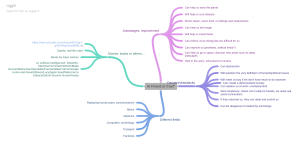

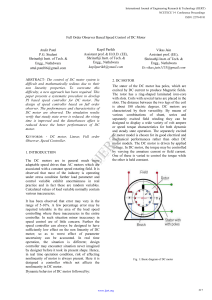
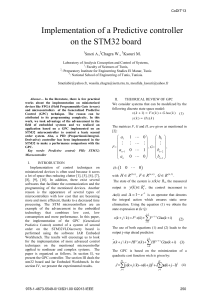
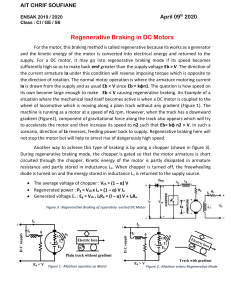
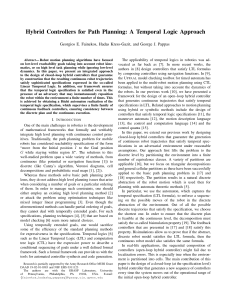
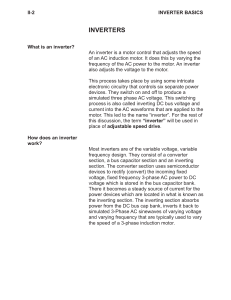
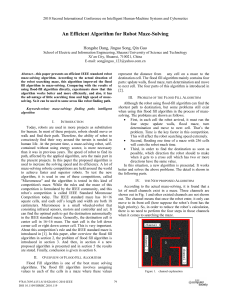
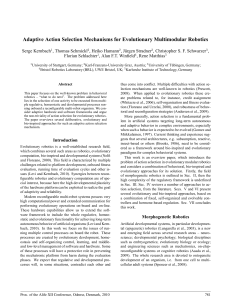
![[Chen G.R.] Fuzzy PID controllers](http://s1.studylibfr.com/store/data/010030374_1-c85df9c0522f888830da70fdeb0c69c6-300x300.png)

